How Much Gpu Do I Need for Video Editing
Buying a new graphics card (GPU) can be tough, especially if you aren't familiar with all the nitty-gritty tech jargon involved.
Most consumers in the market for a graphics card just have to learn how the graphics card will perform in their favorite games, and their purchasing decision is set. But if you want to buy a GPU for, say, video editing or 3D rendering, finding relevant info is considerably more difficult.
Especially for 3D-Rendering, you'll save a lot of time and money if you render as fast as you possibly can.
Fortunately, we're here to help.
If you have any questions left after reading through this article, feel free to hop down to the comments or our experts Forum and talk to us.
If you already feel like you know everything you need to know, you can also click the button below to go ahead and skip down to our recommendations.
Let's hop in:
What sets apart a rendering GPU from an editing GPU, and other concerns
Especially if you're new to graphics technology, chances are you have a lot of questions that need answering.
We are going to assume a basic level of familiarity here- i.e., you know that GPU stands for Graphics Processing Unit and that a graphics card is an expansion card containing one or more GPUs.
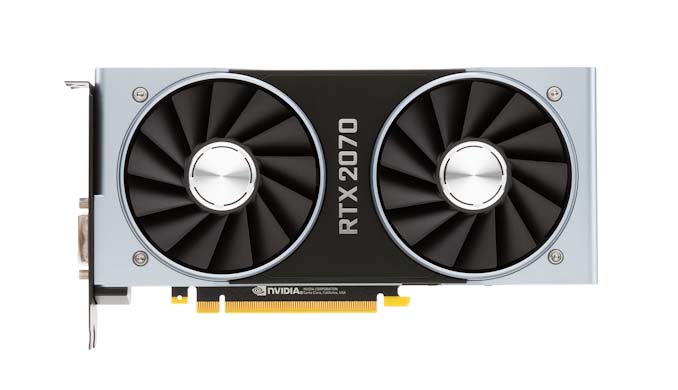
Image-Source: Nvidia
What's the difference? Pro GPU vs Consumer GPU
Nowadays, consumer GPUs and pro GPUs look more similar than ever before.
A few GPUs even blur the lines a bit, like the Radeon VII from AMD or the Titan line from Nvidia.
These are cards with super-inflated price tags and unreal amounts of VRAM, after all.
Today, let's look at Nvidia RTX GPUs. What is the difference between a consumer -facing GeForce RTX card compared to a professional -facing Quadro RTX card?
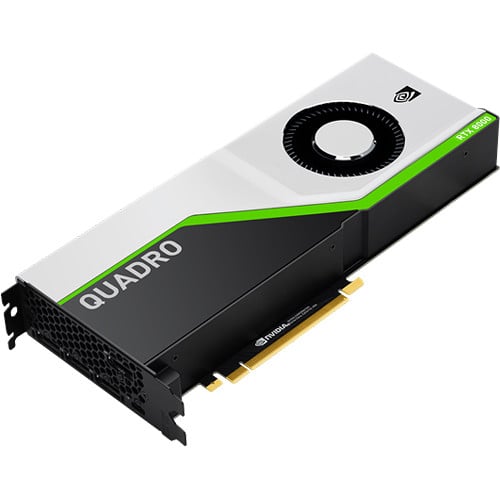
Image-Credit: PNY
They're both using the same hardware architectures, and can sometimes be specced the same down to processing cores and VRAM, but with the Quadro being priced several times more… is it just a scam?
Let's see:
Pro GPUs
The big difference between consumer and pro GPUs is software.
Quadro cards from Nvidia and FirePro cards from AMD are optimized specifically for high-end productivity applications, with extremely thorough guaranteed compatibility with the leading industry apps.
Additionally, they're supported for years and treated as long-term investments in a way that consumer graphics cards are not.
Pro GPUs are tested with industry apps, and drivers are optimized to make them run the best they can. Many high-level industry Apps, such as the popular CAD-Application Solidworks, have special features (such as RealView in Solidworks) that are only supported if you have a pro GPU.
For example, the following Image shows Solidworks' officially supported Nvidia GPUs:
Some Software Vendors only support you and help with bugs or maintaining your Workstation if you are using a pro GPU.
This is crucial for large companies, where server or workstation up-time is of utmost importance to keep their expensive staff working at functional PCs at all times.
And it makes sense, really. Companies with sufficient funds buy Quadro GPUs. Software Developers support companies with sufficient funds. Those companies also usually have dedicated IT-personnel with sufficient expertise.
What would you say is less trouble and more effective:
- A Solidworks Support Guy talking to an IT-Guy at a company that can then fix some Solidworks trouble on all the company's PCs
- Many Solidworks Support Guys talking to hundreds of individual Users that have no understanding of PC/Tech/IT
When you buy Pro-GPUs you buy Pro-Support. (In addition to some hardware features)
Consumer GPUs
A consumer GPU will be great at gaming and consumer applications .
They can also be really good at photo and video editing, and strong consumer GPUs (like an Nvidia RTX 2080Ti) are often over-specced for that kind of job.
Consumer GPUs are also great for GPU-Rendering, as GPU Render Engines don't usually have features that would only work on pro GPUs.
A pro GPU, though, will usually be…not very good at gaming, but superb for editing, rendering, and pretty much any other pro-level task, however, they will come at a much higher price point for the same performance.
So if you know your Software of choice does not use features that require a pro GPU and you don't need the huge amount of VRAM in pro GPUs, a Consumer GPU will almost always be the better choice, especially when looking at performance / dollar.
But let's dive into some more specifics.
CUDA cores, or why Nvidia is being favored here
CUDA cores refer to the special processing cores found inside of Nvidia GPUs, which are exclusive to Nvidia.
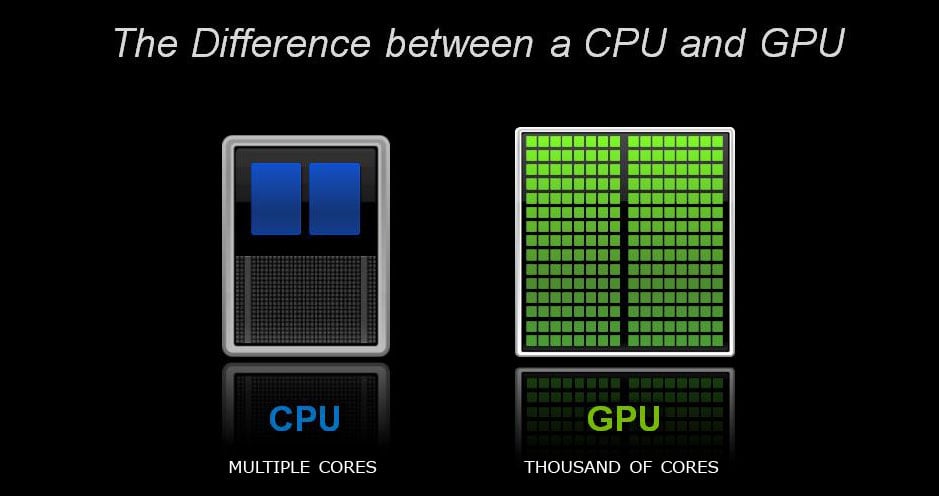
CUDA stands for Compute Unified Device Architecture, and these cores inside Nvidia GPUs essentially serve as raw computational power, rather than raw graphical power.
That's why they are used to power computationally-intensive effects in supported titles, like Nvidia HairWorks, where a GPU alone wouldn't be adequate enough to do the job.
For editing and rendering, CUDA cores are an indispensable source of extra computational power to throw at a given task.
Most editing and rendering applications are optimized in some way to utilize CUDA cores, so having more in your system will allow you to achieve better, faster renders of your models, videos, and more.
Some popular GPU Render Engines like Octane and Redshift are built upon Nvidia's CUDA, meaning you can only use these if you have an Nvidia GPU. In such render engines, the render performance scales almost linearly with the amount of CUDA Cores your GPU has.
Some applications, like Adobe's After Effects or Premiere Pro, bring support for both Nvidia and AMD GPUs, but often run faster on Nvidia GPUs.
GeForce or Quadro?
GeForce will give you the best value for your money when it comes to things like editing video and raw 3D application performance.
However, since GeForce is a brand aimed primarily at gamers and common consumers, there can be some features missing that high-end professionals might need.
Quadro can provide high performance in many applications, but the main point of attraction is its software support for enterprise users.
Any performance gained comes at a severe price premium when compared to GeForce.
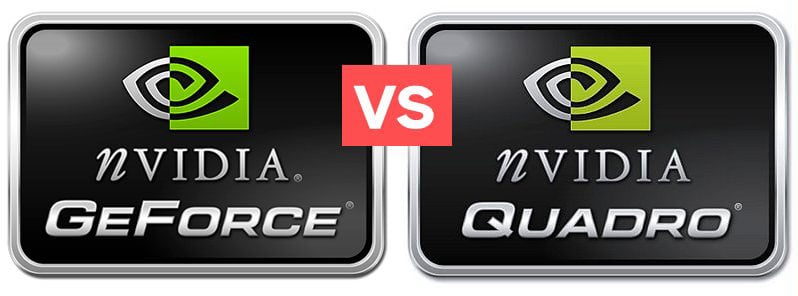
If you need ECC (Error-correcting code memory) or the absolute best drivers for your professional applications, though, Quadro is the best choice –
GeForce is focused on games and consumers, Quadro is focused on business and enterprise users.
Additionally, Quadro will also be specced with much higher CUDA core and VRAM counts, and will sometimes have exclusive features like ECC, which we'll elaborate on a bit later.
Overall, we recommend Quadro to users who:
- Can write off the high prices as a business expense
- Can make use of ECC, higher amounts of VRAM, higher Floating-Point precision, higher Monitor Bit-Depth
- Need special Software features only supported on Pro-Level GPUs (e.g. Solidworks, Autocad … )
- Regularly rely on the Software Vendor's Maintenance and Support
- Need their hardware to be thoroughly tested for durability and stability in enterprise- or server-environments, even at 24/7 uptime
We recommend GeForce to users who:
- Don't make use of features only supported on PRO-level GPUs
- Want more bang for their buck
- Don't necessarily need high amounts of VRAM or ECC
- Don't rely on regular software support from their Application's Vendor
- Might also want to game every now and then
Do I need RTX?
Nvidia's "Turing" Architecture is the first to introduce RTX, which brings a few new features on top of CUDA cores- namely, RT and Tensor cores.
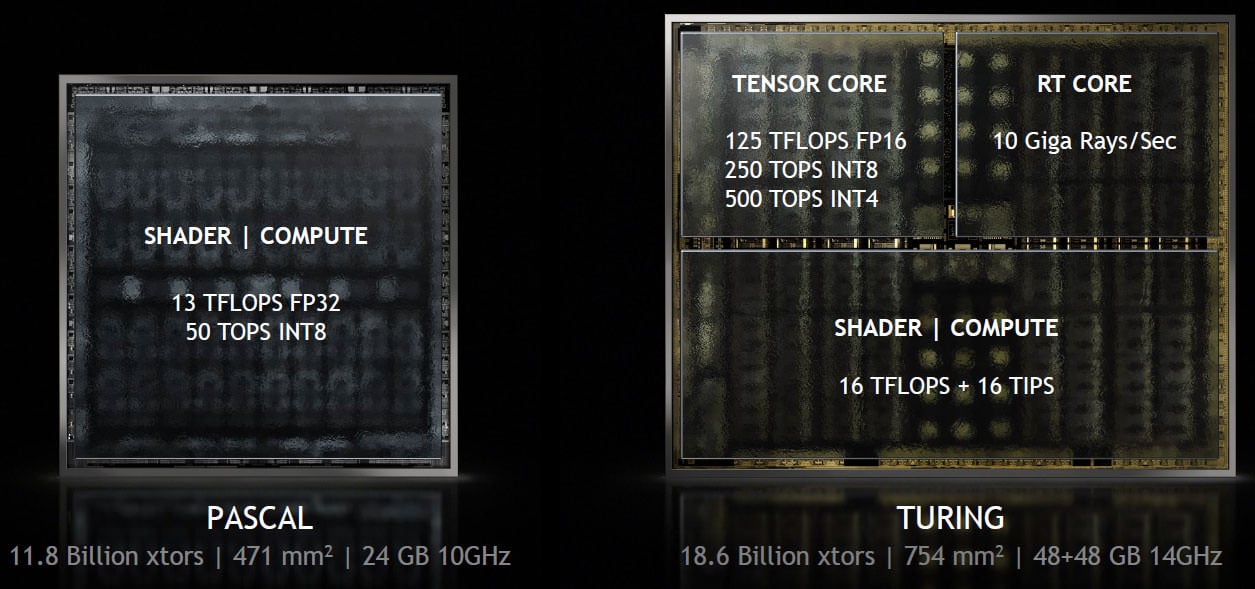
Image-Source: Nvidia
RT cores are for ray-tracing purposes and built exclusively for it.
For professional rendering, having a more powerful ray-tracing GPU can greatly accelerate the workload, at least in supported applications.
If you do not need a ray-tracing GPU (especially if you're focused on, say, video editing instead of 3D rendering), then the presence of RT cores are unlikely to make much of a difference.
Tensor cores are another story and become quite a bit more interesting.
In consumer GPUs, Tensor cores are used to achieve things like DLSS (Deep Learning Super-Sampling), which uses AI to improve image quality.
For professional use, Tensor cores can be leveraged for their great FP16/FP32 and INT4/8 capabilities, which make them ideal for neural networking, deep learning, AI, etc.
If those areas sound like something that your business wants to explore, Quadro RTX may be what you're looking for.
RT Cores can also speed up your rendering quite a bit, at least in supported Render Engines. Octane and Redshift for example are working on an implementation to make use of RayTracing Cores.
In summation, RT and Tensor cores add some nifty extra features that may or may not make a difference to your workload.
However, we still recommend getting RTX GPUs over past-gen Nvidia GPUs, because even without leveraging these extra processing cores, the latest RTX GPUs do boast significant performance improvements over their non-RTX predecessors.
What do you need from an editing GPU?
Video Editing, mercifully, requires a much less demanding GPU than for professional rendering.
Even your basic consumer GPUs from Nvidia with CUDA cores will do the job here, especially if you're just a single content creator doing freelance work or posting to sites like YouTube.
Take a look at the following Premiere Pro Video Editing Benchmarks, that clearly show where the GPU Sweet Spot lies:
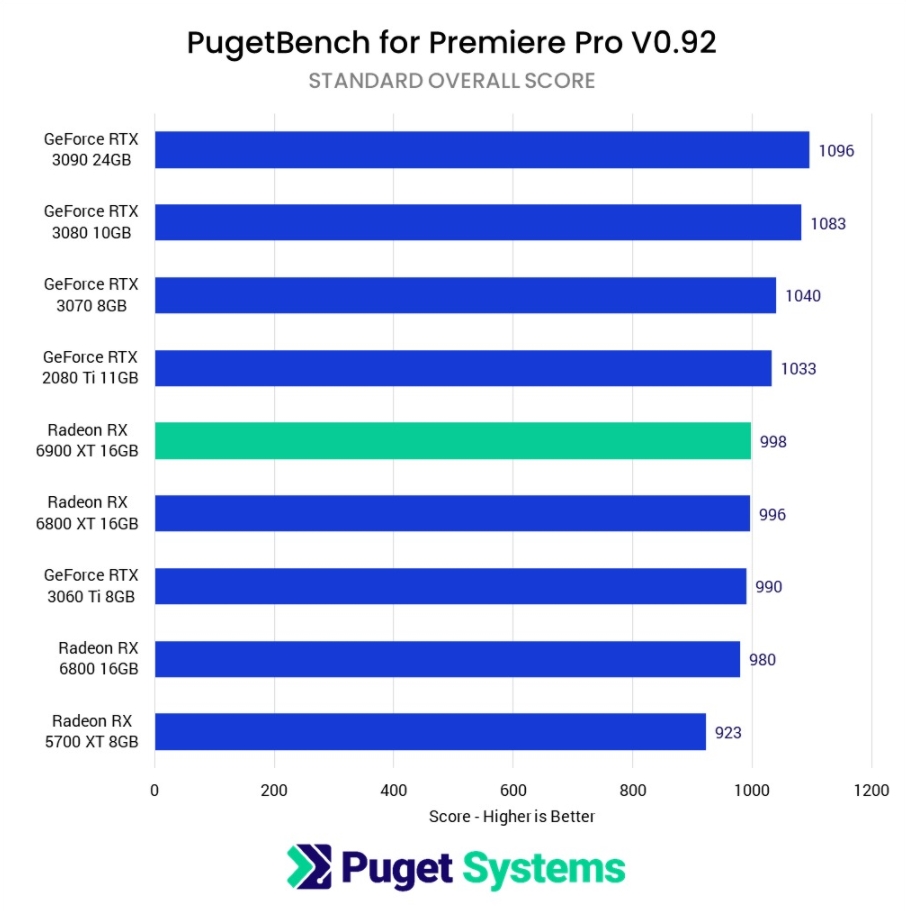
Image-Source: Pugetsystems
Video and photo editing do not require the bloated specifications and price tags of Quadro GPUs by any stretch of the imagination, so you'll be perfectly suited with a lower- or mid-tier GeForce RTX GPU.
If your needs are a bit more enterprise-level (ie, 4K/8K HDR video), then you may want to opt for a higher-end GeForce RTX GPU.
What do you need from a rendering GPU?
From rendering GPUs – explicitly 3D rendering in a professional environment – you'll want a lot more from your GPU.
The biggest thing that you'll need from a rendering GPU (given it is compatible with the render engine you are using), are the highest possible number of CUDA Cores and VRAM.
The time it takes to render an average Frame on your GPU is almost linearly inverse proportional to the amount of CUDA Cores your GPU has.

The GPU though can only make use of its huge CUDA Core performance if the 3D Scene Data fits into its VRAM (Video Memory on the GPU).
This means, if you know you have very complex scenes with millions of polygons, sub-poly displacement, or things like high-resolution textures, your need for VRAM will be much higher than if your scenes are fairly simple with only a few objects.
Most GeForce RTX GPUs already have a decent amount of VRAM, usually between 8 and 11GB, but if you need even more, you'll have to go with a Quadro RTX GPU which sports up to 48GB of VRAM.
In Quadro GPUs, you also get ECC , which we'll explain now.
ECC: What it is, and why you might need it
ECC refers to Error Correcting Code Memory .
ECC memory detects and corrects data errors that naturally occur over the course of long-term, high-intensity workloads.
These errors are what cause seemingly-random events like data corruption or system failure, and must be avoided at all costs when fragile enough data is being dealt with.
That's why ECC is most commonly used in servers and enterprise PCs- in order to prevent these errors from occurring when they would cause the worst damage.
In GPUs, ECC is exclusive to professional GPUs from Nvidia and AMD.
In Nvidia's case, these are present only in Nvidia Quadro GPUs and are necessary to prevent fatal errors in certain scenarios.
Most consumers and creators, however,who are not integrated into an enterprise workflow, can safely ignore ECC.
Evaluating performance
The first and best way to evaluate the performance of a given GPU is to look into benchmarks .
Normally, consumers will look at benchmarks of games and other applications to get the best idea of how a given component may perform.
The same bit of wisdom generally applies here, but you do need to know what benchmarks you should be looking at.
For GPU rendering purposes, you have benchmarks of popular GPU Render Engines like OctaneBench, Redshift, and VRAY-RT.
Other resources may help as well, including Passmark's GPU Compute Benchmark chart (for gauging DirectCompute/OpenCL performance).
In addition to benchmarks, there are also core specifications, which we'll be listing under each of our picks below.
The core specs that we'll be tackling are:
- CUDA Cores – Corresponds to raw processing power (great metric for 3D Render Performance)
- Tensor Cores – Corresponds to deep learning/AI capabilities, as well as FP32/16 workloads
- RT Cores – Corresponds to ray-tracing performance, which can be an accelerator for 3D Rendering in supported Render Engines
- VRAM – For managing larger scenes, edits, etc. without overfilling memory
- GPU Clock – A measurement of GPU core speed
Top GeForce and top RTX GPU Specs Table
Note: Actual prices may vary. Quadro RTX cards will often be much cheaper than MSRP, while non-Quadro cards will often be somewhat higher or lower than MSRP.
| CUDA Cores | Tensor Cores | RT Cores | VRAM | GPU Clock | MSRP | |
|---|---|---|---|---|---|---|
| RTX 2080 Ti | 4352 | 544 | 68 | 11 GB GDDR6 | 1350 MHz (Base) | $1199 |
| RTX 2080 Super | 3072 | 384 | 48 | 8 GB GDDR6 | 1650 MHz (Base) | $699 |
| RTX 2070 Super | 2560 | 320 | 40 | 8 GB GDDR6 | 1605 MHz (Base) | $499 |
| Quadro RTX 8000 | 4608 | 576 | 72 | 48 GB GDDR6 (ECC) | 1395 MHz (Base) | $9999 |
| Quadro RTX 6000 | 4608 | 576 | 72 | 24 GB GDDR6 (ECC) | 1440 MHz (Base) | $6299 |
| Quadro RTX 5000 | 3072 | 384 | 48 | 16 GB GDDR6 (ECC) | 1620 MHz (Base) | $2299 |
| Titan RTX | 4608 | 576 | 72 | 24 GB GDDR6 | 1350 MHz (Base) | $2499 |
| Titan V | 5120 | 640 | 0 | 12 GB HBM2 | 1200 MHz (Base) | $2999 |
As you can likely tell from this table, the biggest hardware differences come down to massively boosted VRAM (with ECC), and significant boosts to CUDA, Tensor, and RT cores, at least on the high-end.
Apart from the inclusion of ECC, Titan RTX also offers similar specs to high-end Quadro RTX cards.
Key take-away:
The main reason to opt for Quadro over GeForce is for enhanced stability and driver support for enterprise-level software – otherwise, GeForce cards can get similar performance in many scenarios for much cheaper.
Should I bother with Dual GPU?
If you were building a gaming system, our answer would be very simple: no, absolutely not.
In terms of gaming, multi-GPU support has greatly fallen by the wayside and isn't recommended.
But for productivity…well, that's another story.
Whereas gaming needs to make use of standards like SLI to utilize multiple GPUs for rendering one scene, most editing and rendering apps are made with distributed workloads in mind.
This means that not only do you not need the GPUs working in perfect harmony to benefit from having two cards at once but that you'll see an essentially-linear 2x performance improvement for adding another GPU to your workload!
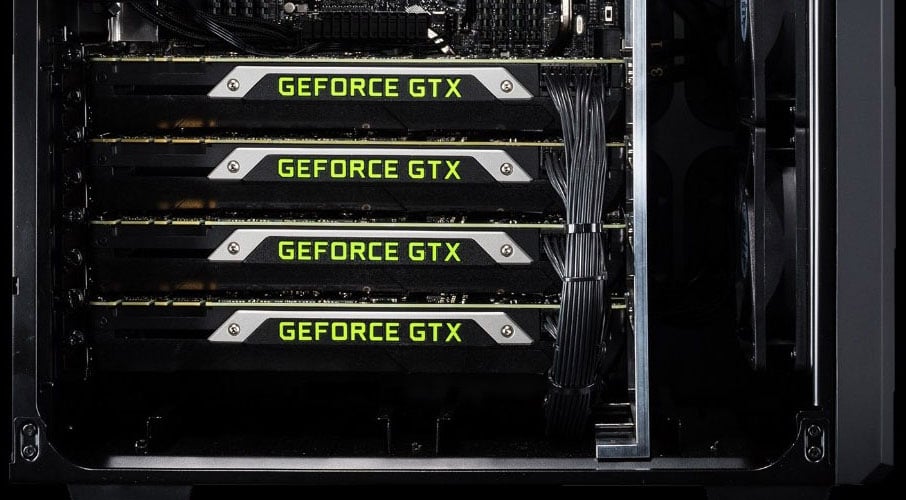
Dual GPUs though aren't the high-end. As adding more cards to your compatible system gives you a near-linear performance increase in workloads such as 3D-GPU-Rendering, it is quite common for 3D-Artists to have HEDT PCs with up to 4 GPUs.
A short bit on Nvidia's NVLINK:
To make use of NVLINK memory sharing you will need GPUs that are of a higher-Tier than an RTX 2070 Super, though. Also, you can't share memory between more than two GPUs at a time with NVLINK and need Render Engine Support for these features to be utilized.
You will need NVLINK Bridges to connect two of your cards.
Dual- / Multi-GPU Setup for Video Editing in Adobe Premiere Pro?
Premiere Pro does not make use of multiple GPUs in your system, so you won't benefit from more than one GPU.
Apart from the GPU, what about the rest of my system?
Great question!
If you're trying to figure out how to spec the rest of your system, we recommend taking a look at our Best Hardware for GPU Rendering and Building a PC for Video Editing Articles.
We go through our top picks for not only rendering GPUs but the rest of your PC's components as well.
We also have a detailed guide to finding the best CPU for rendering, and even a workstation PC build creator if you want to save as much time and effort as possible!
Best Graphics Card For Editing & Rendering: Our Picks
Keep in mind: We are recommending GPU Variants here, such as the RTX 2060 Super. There are lots of different Board-Partners that offer GPUs based on this Chip by Nvidia. Board-Partners include MSI, Gigabyte, EVGA, Asus, among others.
GPUs based on the same chip will roughly perform the same, so you can easily get an EVGA RTX 2060 Super and expect it to perform exactly as an MSI RTX 2060 SUPER, give or take 2-3%.
The main differences here come down to the cooling solution, factory overclocking, RGB and looks, as well as Monitor connectors. The underlying chip, though, is the same.
#1 – Best Value Editing & Rendering GPU: Nvidia RTX 2060 Super
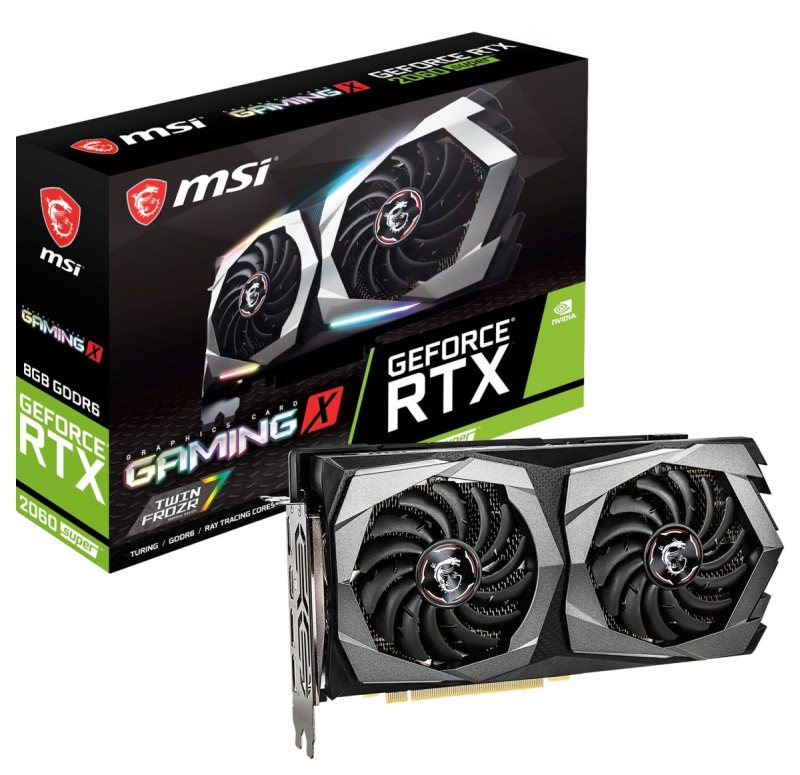
Image-Source: MSI
Specs:
- CUDA Cores – 2176
- Tensor Cores – 272
- RT Cores – 34
- VRAM – 8GB GDDR6
- GPU Clock – 1470 MHz (Base)
If you're on a tight budget but you still want to get good performance in editing and rendering tasks for the money, the RTX 2060 Super would be our first pick.
Compared to the other GPUs in its price range, it offers superb performance across the board, for gaming and professional work alike. (For gaming, though, the AMD RX 5700 is definitely the better option.)
Boasting a modest amount of RT and Tensor cores with a pretty significant number of CUDA cores, the RTX 2060 Super is more than adequate for editing 1080p and 1440p video.
In OctaneBench, the card scores roughly 205, which is considerably better than both the Quadro RTX 3000 (at 149) and the Quadro RTX 5000 (at 184).
This means the raw compute power available in the 2060 Super outstrips that of even Quadro RTX cards that cost several times its price, which certainly isn't bad.
These scores place the RTX 2060 Super firmly in the mid-range of single GPU cards in compute performance.
For those who are just starting out with editing & rendering or who don't have literal thousands of dollars to invest in the hardware yet, the RX 2060 Super is the perfect place to begin.
Want dual-GPU? Get a blower-style RTX 2060 Super instead
#2 – Best High-End Editing & Rendering GPU: Nvidia RTX 3090
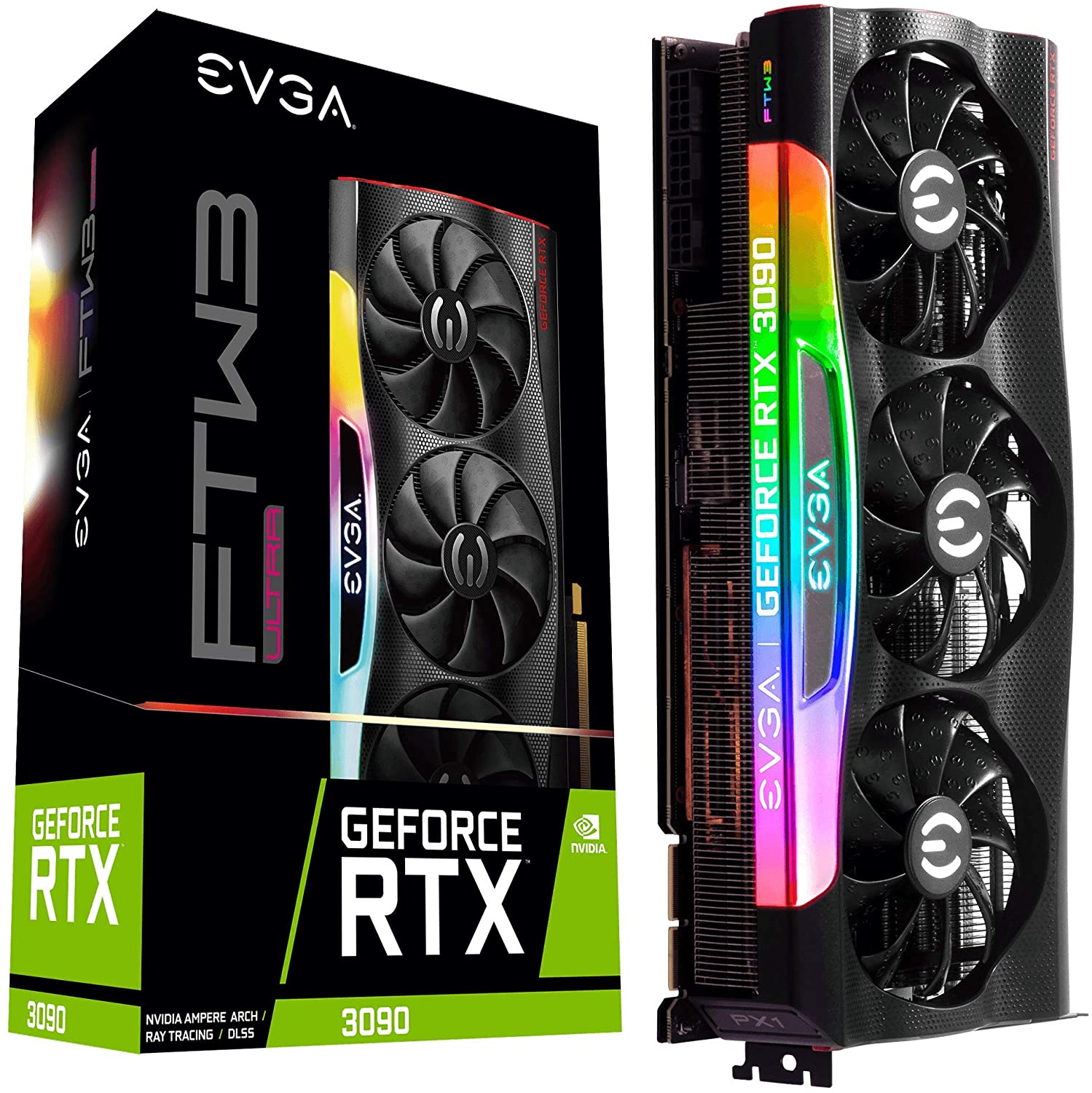
Specs:
- CUDA Cores – 10496
- Tensor Cores – 328
- RT Cores – 82
- VRAM – 24GB GDDR6X
- GPU Clock – 1400 MHz (Base)
If you aren't on a tight budget but don't need ECC and don't want to sell a kidney to afford a graphics card, get the Nvidia RTX 3090.
For gaming purposes, the RTX 3090 doesn't really stack up in terms of performance-per-dollar when compared to its lower-tier counterparts.
However, it does boast a rather significant boost in raw compute performance over said non-Ti counterparts, which makes it a more compelling option for Editing and Rendering.
In OctaneBench, the RTX 3090 scores a nice 661, placing it firmly on the high-end of single-GPU cards in terms of single-GPU performance.
All this considered makes the RTX 3090 our top pick in this tier. If you're going to be working with 1440p/4K video or highly-demanding rendering tasks on the regular, the 3090 is one of the best cards for the job.
Want a blower-style cooler for multi-GPU? Grab this card instead
#3 – Best High-End Pro GPU: Nvidia Quadro RTX 6000
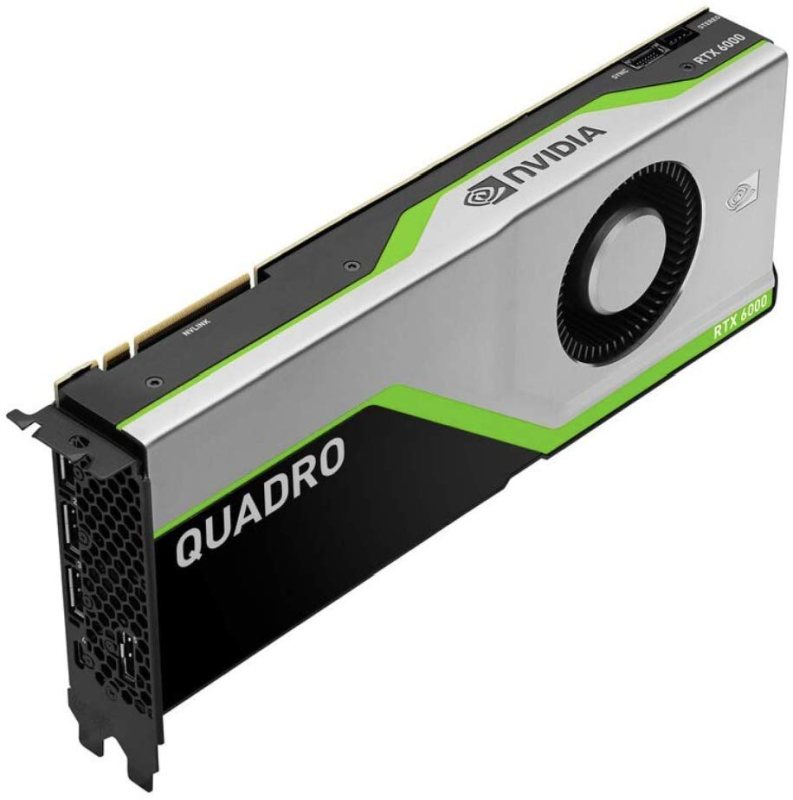
Image-Source: PNY
Specs:
- CUDA Cores – 4608
- Tensor Cores – 575
- RT Cores – 72
- VRAM – 24 GB GDDR6 (ECC)
- GPU Clock – 1440 MHz (Base)
Last but certainly not least, let's take a look at the Quadros.
In terms of raw performance, the Quadro RTX 6000 isn't going to be much better than the RTX 2080 Ti outside of VRAM-constrained scenarios.
This is reflected in OctaneBench, which shows a mere 308 over the 2080 Ti's 302- an incredibly marginal difference. But if you've read the article, you probably figured that part out already.
The main incentive for getting a Quadro RTX card is the enhanced software support, stability, and ECC RAM support.
If you want something in this price/performance range but the Quadro RTX 6000 doesn't offer exactly what you're looking for, consider the three alternatives provided below.
If this card looks a little VRAM-choked for your purposes, opt instead for the Quadro RTX 8000. Most of the specs are the same, but VRAM is doubled.
Performance differences in non-VRAM-bound scenarios are incredibly marginal.
If ECC doesn't matter for your workload, you can also go much cheaper and get the Nvidia Titan RTX, which has virtually the same specs as well.
If ECC doesn't matter for your workload and you don't mind paying around the same price, also consider the Titan V.
It doesn't have RT cores, but it does have ample compute power- the best of any single GPU, according to OctaneBench– and it still has even more Tensor and CUDA cores to work with. It does have less VRAM, though.
That's about it! What GPU or other PC-Parts are you thinking of buying?
How Much Gpu Do I Need for Video Editing
Source: https://www.cgdirector.com/best-gpu-for-editing-rendering/
0 Response to "How Much Gpu Do I Need for Video Editing"
Post a Comment